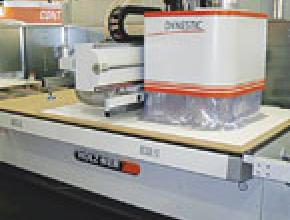It’s fascinating how woodworking shops grow. Often, it’s an organic process typically started as a one-person operation, maybe as side jobs or a hobby at first. Original tools and equipment might be personal acquisitions enough to power a small garage workshop.
As business expands, most shops finance growth through increasingly bigger jobs. They think, “If I get the Smith job, then that should pay for that table saw upgrade.” Over time, the shop and tools grow, and maybe helpers become employees, and equipment and space needs outgrow the garage.
Almost never is this growth planned or seriously calculated. There isn’t a calendar with benchmarks to reach and capital improvement plans to fuel growth. The business just hobbles along, job to job, month to month until one day needs are greater than what can be purchased out of the profits from one new job. Maybe the shop needs to consider financing new machinery.
This is a potentially eye-opening opportunity. A really common example for a growing shop is the purchase of the shop’s first production edgebander. Whether the shop has gotten by with a little tabletop bander or even ironing on the banding, they know there has got to be a better way. But those production edgebanders are just so darned expensive, even the so-called entry-level units. The shop has never spent that much money on a machine before. How can it be justified?
But the shop owner sharpens his pencil and does some calculations. Maybe the bookkeeper or CPA is involved. Finally, there’s the trip to a machinery dealer or a big trade show. Then that scary moment, when the shop owner signs on the dotted line and commits to spending all that money.
And you know what usually happens? Soon as the machinery is up and running, the owner and workers in the shop are shaking their heads and asking, “Why didn’t we do this sooner?”
One successful capital financing operation often leads to more and signals some serious growth for a company. Well-managed and carefully planned expansions can be very profitable, especially in a period of booming demand and major challenges in hiring more employees. Sometimes machinery can boost production without as many bodies required.
They say it takes money to make money. Sometimes the money it takes is borrowed. But you can’t just throw money at machines willy-nilly and hope for the best. You need to do your homework, make serious calculations.
This is how hobby shops transition to full-scale businesses. This is how businesses expand and explore new markets. This is how business owners learn to stop chasing their tails from one job to the next and start planning for a future of growth. We are nearing the biggest trade show of the year. Are you ready or are you still stuck at one job at a time?







Have something to say? Share your thoughts with us in the comments below.